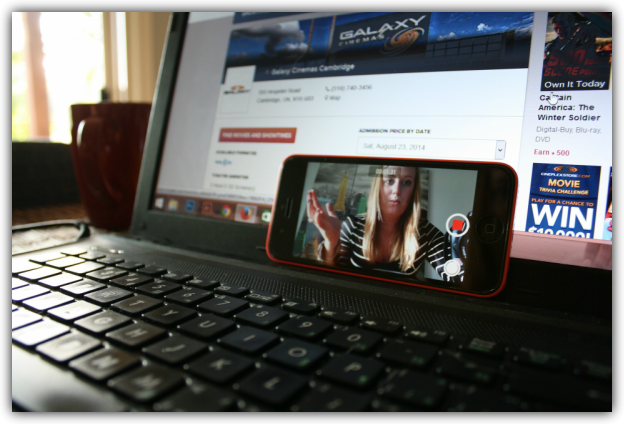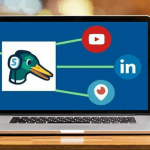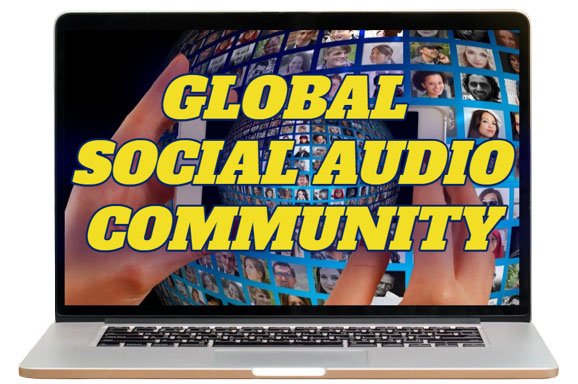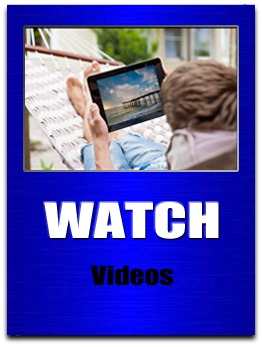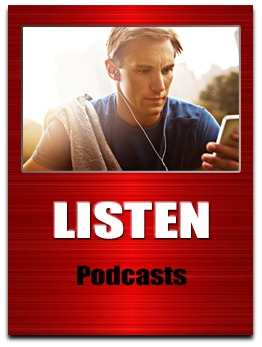A SHORT HISTORY OF LIVESTREAMING
Guest blogger Dave Gonzales explains the major milestones that have allowed livestreaming to evolve to where it is today and how this can be an extremely useful marketing strategy for your brand or business.
So What Is Livestreaming Anyway?
Streaming is short for data stream, breaking up parts of a data file versus downloading an entire file at once as one big segment.
Prior to that the file would have to completely downloaded completely before it could be viewed or listened to.
The technology developed in the late 20th century made it popular and assessable for many more people to enjoy.
How & Why Did It Evolve?
There are some essential dates leading up to what we now think of as livestreaming, so let’s examine those first
1876 - Alexander Graham Bell invents the telephone
1922 - The concept of streaming is invented & patented by George Squier as Musak
1969 - Apollo 11 lands on the Moon
1971 - First Intel commercial microprocessor developed
1975 - Microsoft Founded
1976 - Apple, Inc. Founded
1988 - Fiberoptic lines start to be laid across the existing telecommunications network
1991 - World Wide Web comes out as an internet service
1993 - First Livestreamed video
1995 - RealPlayer streaming media software Founded, Amazon.com Founded
1997 - James Cameron’s “Titanic”, Amazon.com goes public
2007 - Release of iPhone
2015 - Launch of Periscope
What’s Next ((??))
Necessity Is The Mother Of Invention
How do you share a live event without prerecording it and having users wait 40 minutes to save the entire file?
This concept saw little advancement until the 1980s when computer technology started to boom from the creation of the microchip and advances in network bandwidth.
Instead of electric signals, binary (containing numerical values of zero and one) data packets would be streamed.
A familiar example of this is television, or in the above case, Wonka-vision, shows how the original source is transported via many parts to the receiving location which then recompiles it for the user experience.
1990s Web-based Streaming Breaks the Internet, RealPlayer Popularizes Streaming Data
The 1990s saw an explosion in the personal computer.
Computers became more agile and applicable for the everyday person.
You could send virtual mail (email), chat with friends, and connect with the rest of the world with the click of a mouse.
This was the “Information Superhighway” known as the World Wide Web.
Eventually people wanted to send audio and video media through the World Wide Web, and streaming was the answer.
1993 marked when the first live event was streamed to the world.
The band Severe Tire Damage was used as a guinea pig for Xerox.
The company demonstrated that a live event could be broadcast to an internet audience in Australia.
This literally broke the Internet by consuming half the bandwidth of the entire Internet network of the world at the time.
Until then the World Wide Web was used mostly for information and email, not media.
Soon media files began to be streamed to audiences all over the world using software such as RealPlayer.
One notable broadcast was when a recovered and restored set of whistles from the RMS Titanic were blown for the first time in 1999 since they sank to the ocean floor in 1912.
2000s: On-Demand Streaming and Going Unplugged with Live Streaming
Up until 2005 streams were one-off events.
It wasn’t until YouTube was created and used Flash programming to stream pre-recorded videos.
As YouTube picked up, so did demand for video content on the Web.
As marvelous as these web-based broadcasts were, people wanted to push the envelope and not be tethered to a wall.
Early live streamers such as Justin Kan (future founder of future streaming platform twitch.tv) and Justine Ezarek (@iJustine) would lug heavy transmitters and laptops in backpacks to broadcast their lives on Justin.tv.
Well, that’s one way not to gain weight in college!!
Justin and Justine proved that there was an audience of people who wanted to connect with others in a live streaming context.
More details about this period can be found in Justine’s memoir I, Justine.
At the same time, cellular technology was rapidly advancing.
The “brick” phones were gone.
Flip phones and blackberries were all the rage.
Very few people knew that Apple was about to break into the cellphone industry and transform the way we compute today.
In 2007 the iPhone was released.
This cellphone was more of a tiny computer than a phone.
In fact, the first generation of the iPhone was more advanced than the first personal computers that were sold.
Apple founder and re-hired CEO Steve Jobs introduced the concept of “mobile computing.”
This was popularized in 2009 with the phrase “There’s an app for that.”
Still, it took almost a decade for livestreaming to gain traction.
As before, technology had to catch up before livestreaming became practical for the average user.
2010s: The iOS Takeover, Mobile & Multi-platform Streaming to Niche Audiences
To say that Apple blew the competition out of the water is a severe understatement.
Computing was never the same again.
As apps grew with the popularity of “smart” phones, video became a possibility.
Soon, a user could take decent video with their phone.
Then everything clicked.
Meerkat was the first popular app for people to livestream video through a mobile device.
Meerkat was followed by Twitter-acquired livestreaming app Periscope in 2014, which became a more popular choice.
In 2016 platforms YouTube and Facebook (along with Instagram) also became capable of mobile livestreaming,
In 2017 the livestream landscape changed yet again.
Now instead of having to choose a single platform to broadcast their stream to, a broadcaster can broadcast to multiple platforms simultaneously.
With third party encoder software, a normal user can create a more professional livestream experience.
This is important as livestreams are becoming a component of the entire social media picture.
Approaching 95 years from the moment the idea of breaking a signal into segments was conceived, the ability to stream content has revolutionized how people communicate with each other and share information.
After all, the World Wide Web is only 26 years old, waiting for the next burst of technological advances to push us towards a new future of streaming.
A SHORT HISTORY OF LIVESTREAMING
“THE SHORT HISTORY
OF LIVESTREAMING VIDEO” https://t.co/T0JpKqmrXS
via @DaveGonz2012
cc @BabbleOnBrooke#LiveStreaming #LiveVideo #VideoMarketing
((Guest Blog Post)) pic.twitter.com/DW7MgtwIAm— Keith Keller ???? (@KeithKeller) December 11, 2017

